BLM Proposal Restricts Access to Energy Sources

The Interior Department is seeking to close hundreds of thousands of acres of land in Wyoming to traditional and renewable energy development, a plan that would cut crucial natural resource development off at the knees (POLITICO Pro, subscription).
What’s going on: Though the Bureau of Land Management’s plan, released Thursday, scales back from previous iterations the acreage recommended for conservation, it still considerably “throttles back how much of the federally administered area’s 3.6 million acres is in play for different forms of energy development.”
- The final announcement, part of the BLM’s proposed Resource Management Plan for the Rock Springs Field Office, is tantamount to “pushing Wyoming off an economic cliff with nothing more than a tattered parachute,” said John Barrasso (R-WY), ranking member of the Senate Committee on Energy and Natural Resources. “This plan isn’t designed to manage Wyoming’s natural resources. It is designed to suffocate them. … [It] directly jeopardizes Wyoming’s economy and our way of life.”
What it would do: If approved, the blueprint would replace its 27-year-old predecessor document and prohibit drilling on nearly 1.08 million acres—almost twice the number currently off-limits to new oil leases.
- It would “also [exclude] 494,350 acres from wind and solar power development and [close] 536,018 acres for geothermal power projects.”
Why it’s important: The plan could reduce economic activity in Wyoming’s oil and gas sector by some $907 million each year and cost the state nearly 3,000 jobs, according to estimates by several energy groups (Cowboy State Daily).
The NAM says: “This latest move by the Interior Department undermines U.S. energy security by needlessly restricting access to available domestic sources of critical natural resources as part of an all-of-the-above energy future,” said NAM Director of Energy and Resources Policy Michael Davin. “We urge the agency to reexamine and revise its plan.”
A Navy Vet Finds a New Mission
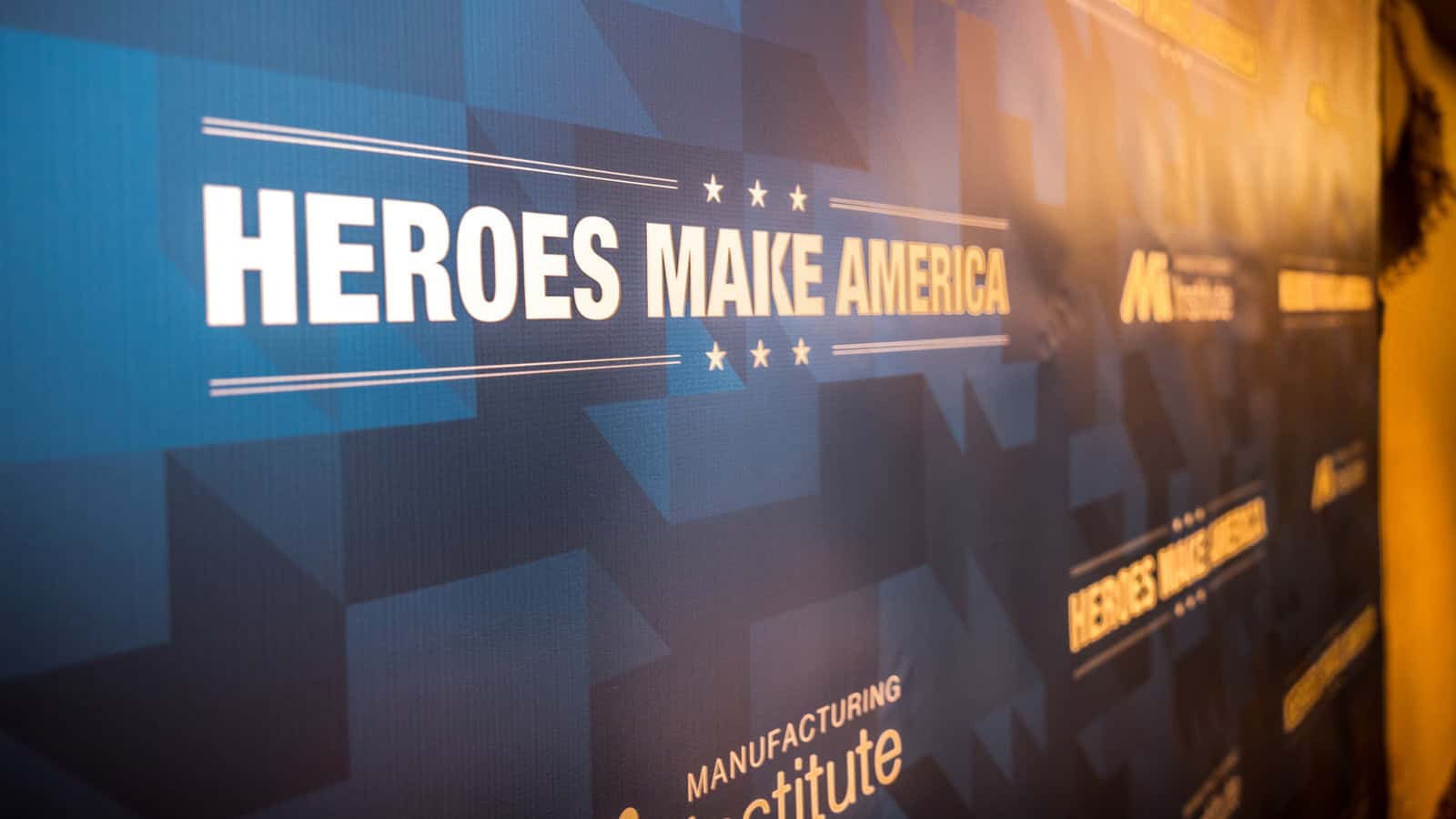
Many people imagine that a job in manufacturing requires working on a shop floor to create products. Joseph Fields—a human resources professional at MGX Equipment Services—knows that isn’t the case.
“Working in MGX, there’s cranes and welding and engineering—but there’s also HR, and finance, and payroll, and employee health and safety,” said Fields. “There are lots of opportunities you can lean into.”
The background: Fields spent eight years as a yeoman in the U.S. Navy when he transitioned into a civilian role in 2000. Over the course of the next two decades, he worked in human resources at a variety of companies. However, he was laid off in October 2023 after a six-year stint when his employer downsized.
- A few days later, he attended a virtual career fair sponsored by Heroes MAKE America—a Manufacturing Institute program that builds connections between the military community and the manufacturing industry—and found his new role.
- “I wasn’t planning to go to the HMA career fair, because I had zero experience with manufacturing,” said Fields. “But I saw it on LinkedIn, and at the time, I hadn’t interviewed with anyone in six years. I figured this would be a good opportunity to talk about myself and get some feedback.”
The result: Fields didn’t just get feedback, he was offered a job with MGX, one of the manufacturers in attendance.
- “I met with lots of great companies, including a manager at MGX, and we had a great conversation,”
 said Fields. “She called me the next day and asked if I was interested in an HR position. They offered it to me the week after Thanksgiving.”
said Fields. “She called me the next day and asked if I was interested in an HR position. They offered it to me the week after Thanksgiving.” - “We are very thankful we found Joseph through Heroes Make America. He attended our virtual career fair and visited our breakout room. After listening to our presentation a few times, he still stayed in our room,” said MGX Director of HR Ashley Barkdoll. “I could tell he would be a great fit for our team after having a few conversations with him.”
The program: Heroes MAKE America provides integrated certification, career-readiness training and job-searching support in partnership with local technical and community colleges to prepare transitioning service members, veterans, National Guard members, reservists and military spouses for rewarding careers in the manufacturing and supply chain industries.
- Heroes also offers virtual and on-site career fairs—like the one where Fields found his new position—for members of the broader military community.
The other side: Today, Fields is paying it forward by working with Heroes MAKE America to find veterans and others with military affiliations to interview with MGX. He’s especially grateful for the support that Heroes gives to graduates and other job seekers throughout the hiring process.
- “I like that Heroes MAKE America not only promotes organizations that focus on veteran hiring, but also that they do the follow-up to make sure people get hired,” said Fields.
Advice to veterans: Fields wants other veterans to know that manufacturing offers a broad range of opportunities, with something for everyone—and that Heroes MAKE America can help them find it.
- “It’s not about finding a manufacturing job; it’s about finding a job in a manufacturing company,” said Fields. “There are so many different kinds of roles and opportunities.”
- “If you’re unsure about finding a job in manufacturing, attending the virtual career fair is a great option to meet with companies to see what they have to offer, even if you think this industry isn’t something that you would normally consider,” added Barkdoll.
Advice to manufacturers: Fields encourages other employers to connect with the Heroes MAKE America program and see everything that a veteran brings to the table.
- “Some of us may not have hands-on experience for the position you’re trying to fill, but we’re trainable,” said Fields. “So ask yourself: Can I train up for this position?”
The last word: “Take a chance on a veteran,” said Fields. “You’ll get a great employee out of it.”
Texas Court Blocks FTC Noncompete Ban
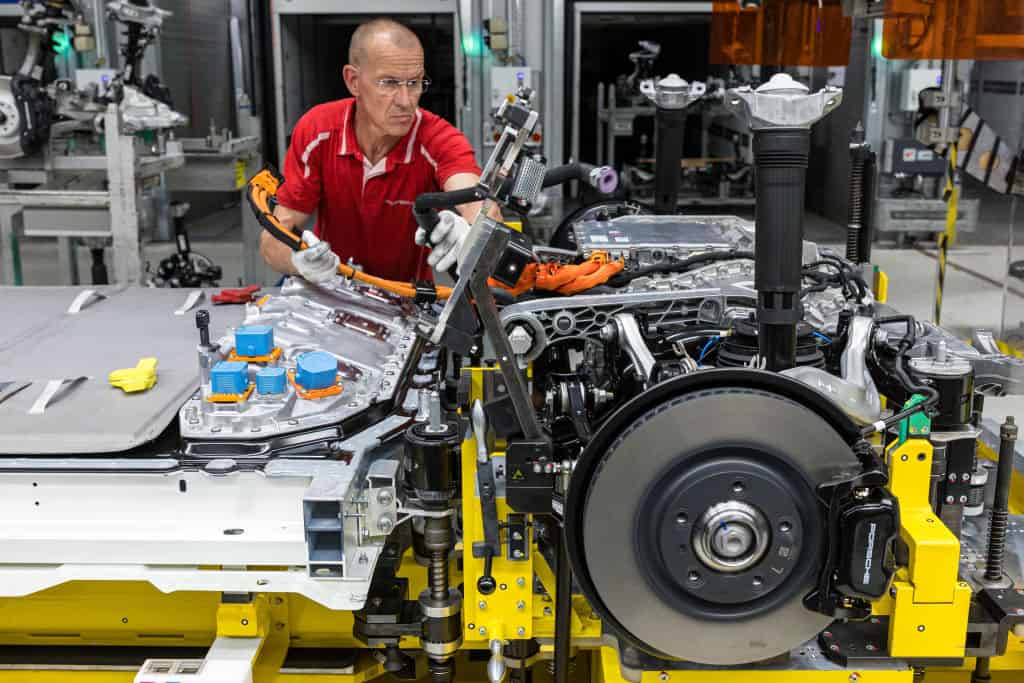
The Federal Trade Commission does not have the authority to enact the sweeping noncompete ban it finalized in April, a federal judge ruled Tuesday (The Wall Street Journal, subscription).
What’s going on: “U.S. District Judge Ada Brown ruled that the commission’s authority to police unfair methods of competition couldn’t be used to issue substantive regulations that ban an entire category of conduct. ‘The role of an administrative agency is to do as told by Congress, not to do what the agency thinks it should do,’” she wrote, adding that the ban was “unreasonably overbroad without a reasonable explanation.”
- The rule—which had already caused companies’ costs to increase in anticipation of the Sept. 4 effective date—sought to prohibit noncompete agreements between employers and their employees.
The NAM’s role: In May, the NAM’s Legal Center filed an amicus brief asking Brown’s court to stay the rule on the grounds that a ban on noncompete agreements would “hamstring innovation in the manufacturing sector and damage the competitiveness of American industry.”
- Brown issued a limited stay in July. Her ruling this week—echoing the NAM’s argument that the rule is “not reasonably explained”—prohibits enforcement of the FTC rule nationwide.
- “The NAM expressed concerns throughout the rulemaking process, and a 2023 NAM survey showed that a broad noncompete ban would disrupt most manufacturing operations in the U.S.,” NAM Director of Transportation, Infrastructure and Labor Policy Max Hyman said following Brown’s ruling this week.
What’s next: The FTC is considering an appeal of the decision, a spokeswoman told the Journal.
- But “[i]f lower courts remain split as the litigation moves through the legal system, the matter might ultimately fall to … [the] Supreme Court, [which] has taken a dim view of government agencies invoking new regulatory powers from long-ago statutes.”
This post has been edited.
Rep. Johnson Talks Tax Policy at Smurfit Westrock
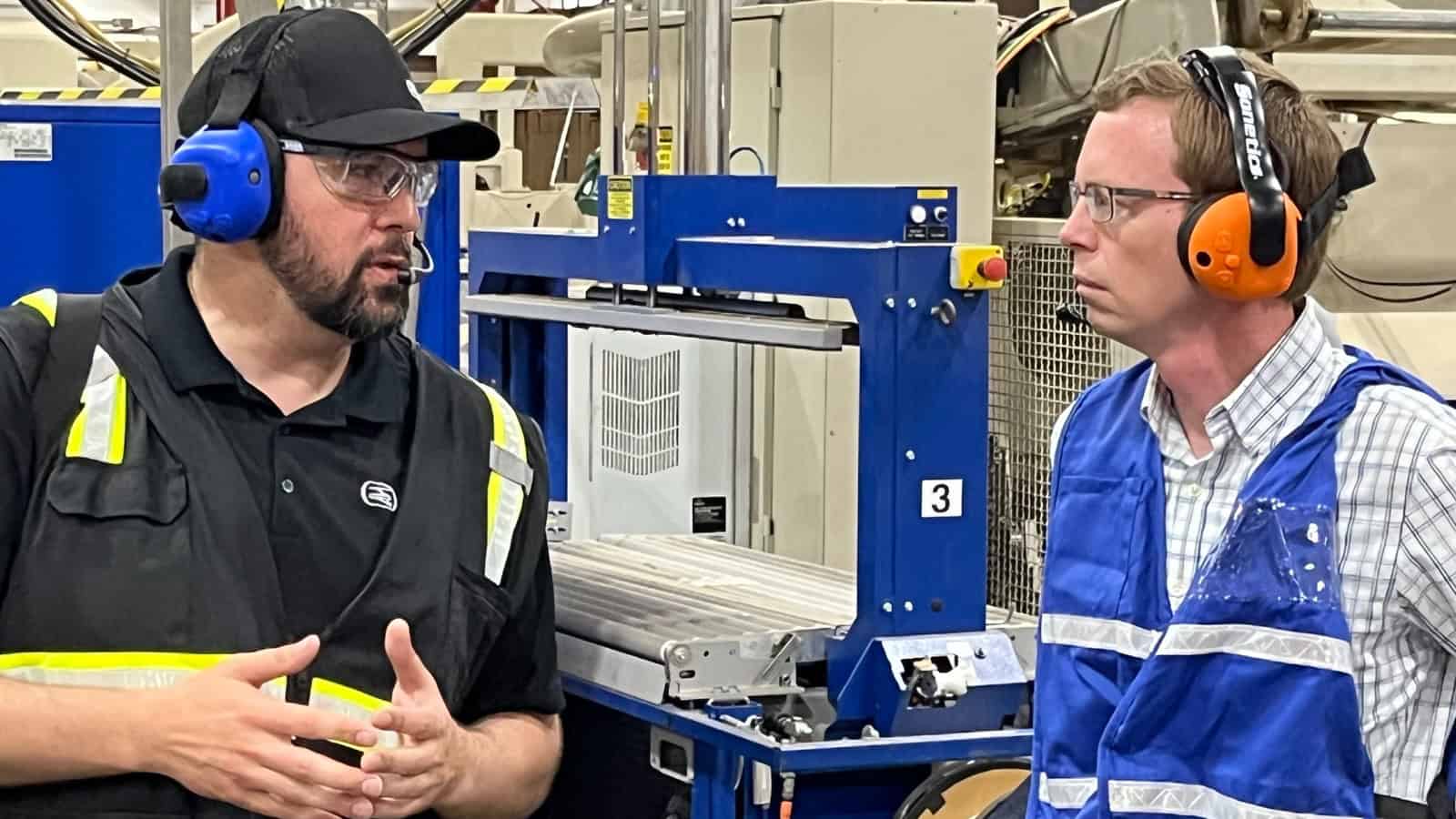
Rep. Dusty Johnson (R-SD) recently visited Smurfit Westrock’s facility in Sioux Falls, South Dakota, to speak with local business leaders and NAM representatives about the importance of maintaining pro-growth tax policies for manufacturers.
The tour: Smurfit Westrock Plant General Manager Gerald Loftin led Rep. Johnson through their state-of-the-art packaging facility, showcasing the company’s innovative solutions and highlighting its role as a major employer in the community, supporting local jobs and economic growth. Smurfit Westrock, a global leader in sustainable paper and packaging, operates in 40 countries with more than 500 packaging converting operations and 63 paper mills.
- “Smurfit Westrock’s success directly benefits the community, providing employment and contributing to the local economy,” Loftin said. “We are proud to be a part of this region and to support the growth and well-being of the area.”
The threat: NAM Vice President of Domestic Policy Charles Crain addressed the risks posed by expiring tax provisions. “Tax reform was rocket fuel for the manufacturing sector,” Crain explained. “It led directly to record levels of both job creation and wage growth in the years following the bill being signed into law.”
- Crain also emphasized the importance of preserving tax reform in full. “Essential tax reform provisions have already begun to expire—for example, full expensing, which has been crucial for our industry’s ability to invest in new equipment and expand operations, started phasing down last year,” Crain said. “Even more devastating changes are scheduled for 2025, the combination of which will significantly hamper manufacturers’ capacity to modernize and grow, directly impacting competitiveness and job creation.”
Calling on Congress: “Manufacturers are grateful to Rep. Johnson for supporting legislation earlier this year that would have revived immediate R&D expensing, a pro-growth interest deductibility standard and full expensing for capital investments,” Crain said. “We are looking to Congress for leadership and swift action as we work to prevent the harmful tax increases in store next year.”
Listening to manufacturers: Rep. Johnson emphasized his strong support for extending key tax provisions.
- “After seeing firsthand how these tax measures have benefited Smurfit Westrock and hearing about the negative impacts of their expiration, I’m more convinced than ever that we need to act swiftly to extend them,” he said.
- “Full expensing, R&D expensing and competitive tax rates are vital for the continued growth and innovation of our manufacturing sector. I’m committed to working with my colleagues in Congress to ensure we preserve these pro-growth policies before they expire, supporting jobs and economic development here in South Dakota and across the nation.”
The bottom line: “Extending the 2017 tax reform is not just a priority, it’s a necessity for maintaining America’s competitive edge in manufacturing,” Rep. Johnson concluded.
Get involved: Manufacturers interested in sharing their perspectives on tax reform with congressional leaders or hosting facility tours for U.S. legislators can find more information through the NAM’s “Manufacturing Wins” campaign.
Meet the Manufacturing Leader of the Year
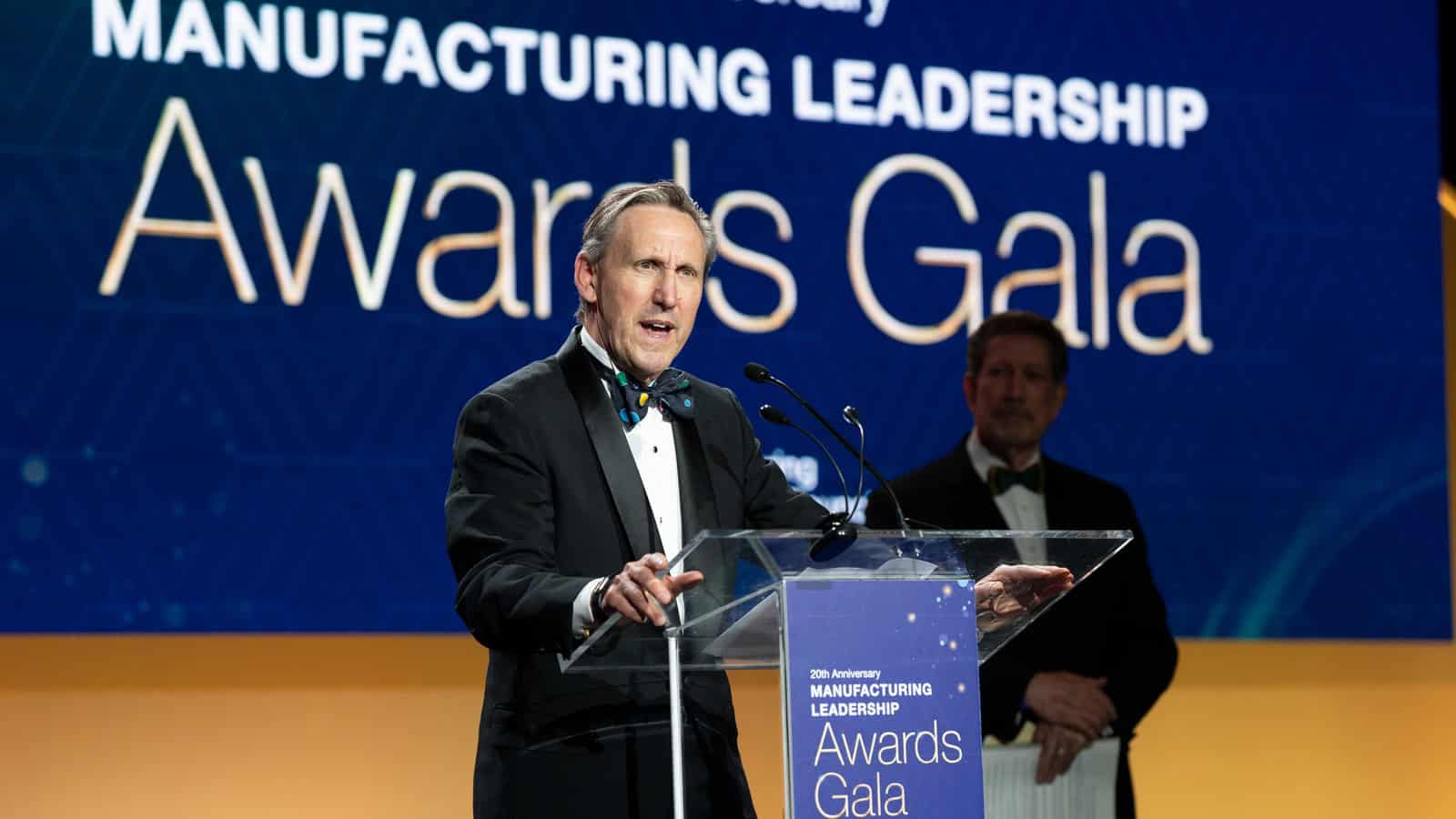
If you’re looking for insights on digital transformation, cultural change and what’s ahead for manufacturing, it pays to consult an industry leader. Dan Dwight, president and CEO of Cooley Group, fits the bill.
Dwight was named the 2024 Manufacturing Leader of the Year in the Manufacturing Leadership Awards, presented by the Manufacturing Leadership Council, the digital transformation division of the NAM. Additionally, Cooley Group won the Small/Medium Enterprise Manufacturer of the Year and the Manufacturing in 2030 Award.
Recently, Dwight sat down for an Executive Dialogue interview with the Manufacturing Leadership Journal to share his secrets to success. Below are excerpts from the interview.
What leaders need: When asked what qualities manufacturing leaders need in the digital era, Dwight says that they must be willing to undergo big changes, but must also keep their teams in the loop.
- “Successful leadership in the digital era demands, among other things, a higher level of transparency,” he explained. “Your team needs to see the road map in front of them because successful and sweeping transformations are extremely time consuming with a lot of jagged edges that the leadership team needs to address.”
How cultures should change: As for the wider cultural changes that will help a company through its digital transformation, resiliency and adaptability are crucial, Dwight said.
- “Cooley’s digital transformation began with a cultural transformation built around becoming more agile and adaptable,” he noted. “Every decision we make places long-term resiliency and cross-functional collaboration as our operational North Star.”
- “Cooley decentralized our decision-making structures, eliminating hierarchal instruction and empowering team members to communicate transparently and more frequently,” he added.
Small manufacturers’ advantage: When asked whether small and medium-sized manufacturers are at a disadvantage in the era of digital transformation, Dwight says that Cooley has turned its small size into an asset.
- “Our longevity is built on using our size to our advantage. We are more resilient, more agile, more adaptable than our competitors who are often [much larger] because we constantly invest in pro-growth strategies regardless of the economic environment,” he explained.
- “Our investments in innovation generate consistent new product revenue of over 20%, and our investments in Manufacturing 4.0 digitization generate consistent, robust productivity dividends,” Dwight added.
What’s next? Cooley Group is looking ahead to further transformations, including in supply chain management, Dwight said.
- “Our business architecture and change management team leaders are working within their respective teams across the organization to build into our processes a more outward-looking focus,” he said.
- “For example, our M4.0 implementation leader has added supply chain resiliency to her leadership responsibilities. Her team seeks to build out Cooley’s end-to-end business resilience.”
MLC in action: Dwight says that Cooley Group has always been able to count on the MLC to find the insights that it needs for digital transformation and its Manufacturing 4.0 journey. As he put it recently, “When challenges do arise, the MLC can help us think through what the future might look like.”
Watch a full video of this interview for more insights.
Seventy Percent of Manufacturers Still Enter Data Manually

Manufacturers are deluged by data. As companies adopt more advanced technologies, they are increasingly overwhelmed by the quantities of raw data that must be collected, analyzed and put to use.
Indeed, a new survey from the Manufacturing Leadership Council—the NAM’s digital transformation arm—reveals that 70% of manufacturers still collect data manually. Here are some highlights from the survey, which reveals where manufacturers need to improve, and how they’re planning to do it.
Exponential data growth: While the survey’s respondents report an explosion of new data, they also expect to keep on top of it over the next few years.
- Forty-four percent of manufacturing leaders have seen at least a doubling of the amount of data they collect in their organization today compared to two years ago.
- While many manufacturers still lack standardized data due to operating a mix of older equipment and systems along with newer technologies, more than half expect that their data will be in a standardized format by 2030.
Analytical improvements: How are manufacturers planning to use all this new data?
- Nearly 60% of respondents say they are focused on understanding their operations with an eye toward optimizing them in the future.
- While 30% of manufacturers say they are using manufacturing data to predict operational performance, another 60% say that predictivity will be a primary objective by 2030.
Better decisions: Manufacturers use data to make better, more proactive decisions, according to the survey. Today, these decisions are made at a relatively high level.
- Seventy-seven percent of respondents said that the responsibility to employ data in decision-making falls to plant leaders and managers.
- Only 33% said that factory floor employees held that responsibility—a percentage that might grow as manufacturers seek to empower frontline employees with greater decision-making ability.
Looking ahead: As artificial intelligence and other emerging digital technologies become more established, they will likely reshape many if not all aspects of manufacturing operations.
- Thanks to advanced sensors and robust data networks connecting equipment and machinery, manufacturers will collect copious data in real time and act on it almost as swiftly.
Read more: To get a deeper look at the current state of data mastery in manufacturing, download the full survey, Data Mastery: A Key to Industrial Competitiveness.
Why Congress Should Cook Up a New MTB

Kitchens across America are missing a key ingredient: a new Miscellaneous Tariff Bill.
What’s going on: SCHOTT North America—a subsidiary of the German specialty glass, glass ceramics and high-tech material manufacturer—produces CERAN glass-ceramic cooktops at its facility in Vincennes, Indiana, where it employs more than 140 workers.
- To manufacture the cooktops in Indiana, the company must first import “green glass”—the glass-ceramic material that is refined and finished for use in appliances—which is not available in the U.S.
- However, heavy import tariffs on green glass make it much costlier for SCHOTT to manufacture these cooktops in the U.S., while fully processed cooktop panels that are finished abroad and then imported are not taxed.
That’s why the NAM is calling on Congress to pass a new MTB as soon as possible. Trade policies should help companies in the United States become more competitive, not less.
What’s the MTB? The MTB temporarily eliminates or reduces tariffs on more than 1,500 different products not available in the U.S. Congress typically renews the MTB every few years with bipartisan support, but the last MTB expired in December 2020, increasing costs for manufacturers nationwide.
- For SCHOTT North America, the MTB’s expiration has led to significantly higher costs for the past three-and-a-half years.
Action needed: To help SCHOTT and other manufacturers in the same predicament, the NAM has been urging lawmakers to pass the Miscellaneous Tariff Bill Reform Act, which would renew the MTB through the end of 2025 and offer retroactive duty relief back to the beginning of 2021.
- Since the lapse of the last MTB, manufacturers have paid more than $1.5 billion to get materials they cannot source in the U.S., according to an NAM analysis.
- While SCHOTT North America has maintained its workforce at the Vincennes site, these growing costs have interfered with the company’s plans for expansion.
- “We employ about 140 people at the site to process green glass, but the potential is there to hire more and do more” if an MTB were in place, said Tim Kiger, general manager for SCHOTT North America in Indiana.
No other options: Melting the specialty glass in the U.S. isn’t an option at this time, according to Jim Purcell, SCHOTT North America’s international trade compliance manager.
- “Producing green glass here in the United States would be incredibly expensive and technically difficult to do,” he said. “To build a melting operation in the U.S. would take a long time.”
A voice in Congress: Back in October, Rep. Larry Bucshon (R-IN), whose district is home to the Vincennes facility, urged colleagues in the House Ways and Means Committee to advance a new MTB in the name of fairness.
- “The MTB ensures that American producers like SCHOTT are not penalized for importing inputs that are not produced in the United States, and levels the playing field against similar finished products being imported from China,” said Rep. Bucshon.
The last word: SCHOTT North America hopes that the MTB legislation, which is sitting in the House, will soon be enacted.
- The financial relief offered by a new MTB “would be almost immediate,” Kiger said.
- Added Purcell, “The MTB is a good mechanism to … conserve savings. In the global market right now, any cost savings helps you stay competitive.”
Corporate Tax Rate: A Q&A with Rep. Carol Miller
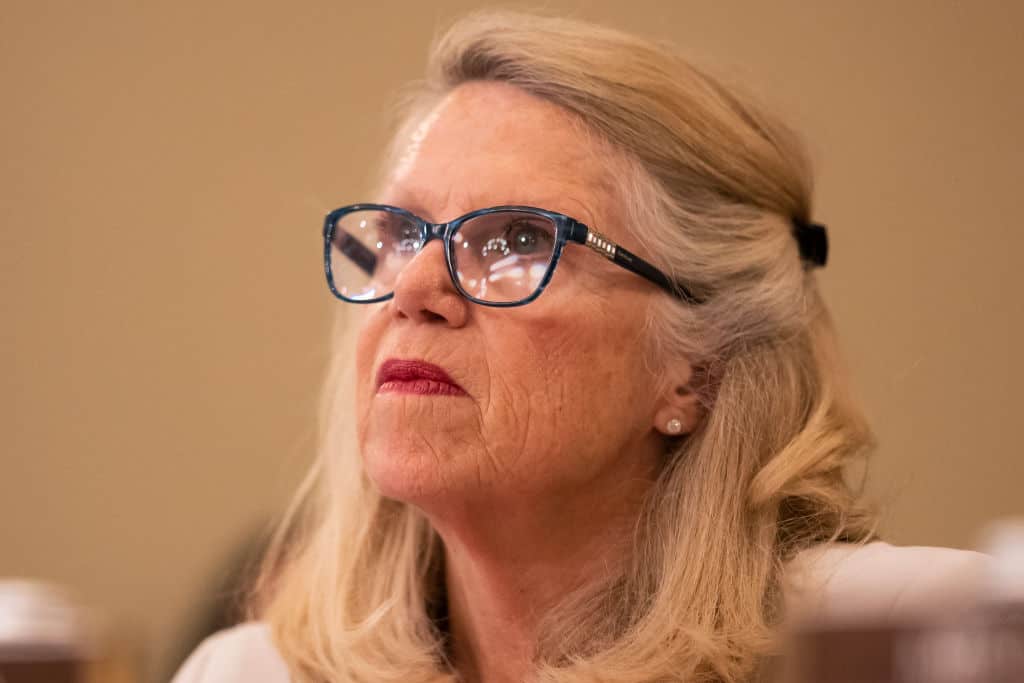
The NAM recently talked to Rep. Carol Miller (R-WV), the head of the House Ways and Means Committee’s Supply Chain Tax Team, about how raising the corporate tax rate would “devastate” manufacturers, and what she and her colleagues in Congress are doing to keep it where it is.
NAM: Rep. Miller, Congress is facing a “Tax Armageddon” next year, as crucial provisions from 2017’s Tax Cuts and Jobs Act are set to expire. As the leader of the Ways and Means Supply Chain Tax Team, what is your focus moving into next year’s debate?
Miller: In all the meetings I have with Fortune 500 companies, small businesses and stakeholders, it’s clear that the corporate rate is top of mind for everyone. We are all concerned that if the corporate rate is raised from 21%, consumers will be hit the hardest by the rising prices of everyday goods and services. I know for capital-intensive industries like mining, having a consistent tax rate is essential. I’m also focused on how energy tax credits are implemented and making sure that the government isn’t picking winners and losers by their rulemaking. During the reauthorization, my Supply Chains Tax Team will be evaluating the various energy credits currently in law to see what works and what needs tweaking.
NAM: Prior to 2017, the United States’ corporate tax rate was 35%, the highest in the OECD and third-highest in the world. Tax reform lowered the rate to 21%, aligning the U.S. with the average rate elsewhere in the OECD. What does it mean for Congress to protect this lower rate, and what would happen if it goes up?
Rep. Miller: If the corporate rate goes up, it would be devastating for every American, from the small business owner to the CEO who is trying to expand their business. The corporate rate rising means there will be higher prices while the U.S. struggles to compete on the global scale. The best thing we can do in Congress is cement the corporate rate at 21%—or better yet, lower it even more—through the TCJA reauthorization in 2025.
NAM: In 2018, the year the 21% corporate rate took effect, manufacturers created more than 260,000 jobs (the best year for job creation in 21 years) and increased wages by 3% (the best year for wage growth in 15 years). What else is the Supply Chain Tax Team seeing on the impact of the corporate tax rate as they visit with businesses around the country?
Rep. Miller: We’ve only seen positive impact from the corporate rate being lowered. When the pandemic hit and the markets were falling due to uncertainty and instability, the lower corporate rate gave companies more flexibility to help their employees and keep costs low instead of paying the government sky-high taxes. The lower corporate rate protected jobs, helped produce more economic growth and makes all the difference for American families who are struggling with inflation. Furthermore, the lower rate led to higher federal revenues since companies were able to expand and invest so heavily following the passage of the Trump Tax Cuts.
NAM: Thank you for being a champion for manufacturers across the country. What can our members do to stay involved and be a resource for your tax team’s work?
Rep. Miller: Spread the word to those who might not know why the corporate rate is so important. The majority of Republicans are on the same page about this, but some think that in order to bring down inflation, you need to raise taxes on businesses. That is not true. Prices only go down if costs for companies go down, and the corporate rate is an effective way to do that while simultaneously boosting the American economy.
Sylvamo Supports Healthy Forest Ecosystems
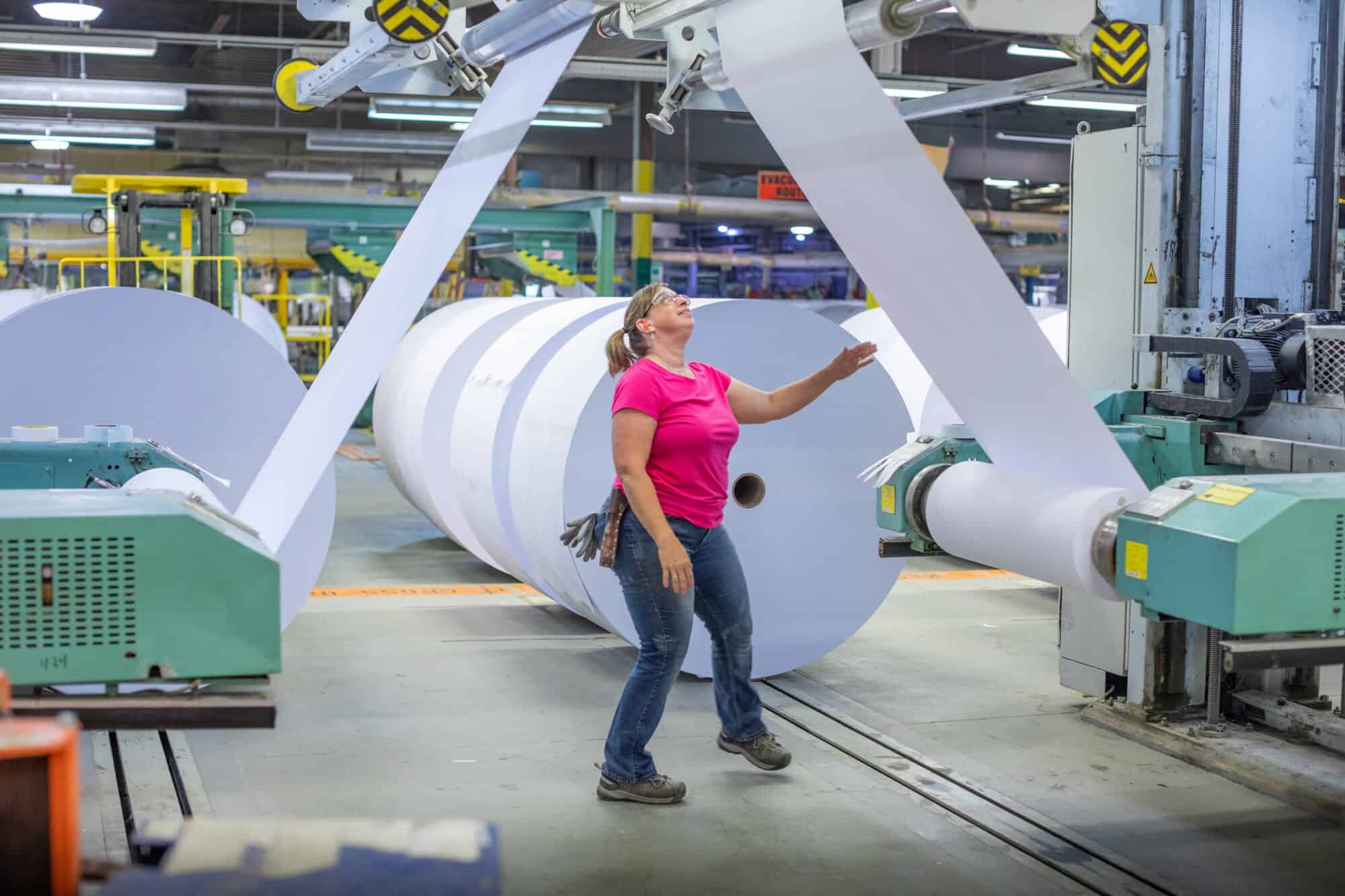
With a name that means “love of forests,” Sylvamo has a built-in dedication to sustainability. And the Memphis, Tennessee–based paper company, which spun off from International Paper in 2021, lives up to its moniker.
A holistic approach: “We use the whole tree in the manufacturing of our products,” Sylvamo Chief Sustainability Officer James McDonald told the NAM. “We use the fiber from the wood to make our paper, and all the residuals—think of the sticky stuff in trees—we capture and use to generate energy.”
- This process supplies the company with approximately 85% of its global energy needs, according to McDonald.
Planting the world: Sylvamo, which produces well-known brands like Hammermill, Accent Opaque, Springhill and HP Papers, is committed to restoring and protecting forests worldwide.
- “Our entire business depends on the sustainability of forests,” McDonald said. “It turns out your third-grade science teacher was right—photosynthesis does work. The more trees we grow, the more we can clean the air and protect the environment.”
Big ambitions: Sylvamo has conserved, enhanced or restored more than 37,000 acres of forestland to date. It has set the lofty goal of reaching 250,000 acres of forestland by 2030.
- To that end, the company is supporting the Nature Conservancy’s work to create a healthy, resilient and connected Appalachian landscape in the U.S. and the World Wildlife Fund’s work to restore Brazil’s Atlantic Forest, while also working with individual landowners to enhance forest management practices in France.
Diverse sources: Sylvamo primarily sources local fiber to manufacture its products in Europe, Latin America and North America, a strategy that enables a smaller environmental footprint, McDonald said.
- “Most of the fiber is sourced very close to [each] mill, which supports our low-cost assets in each region and this global footprint advantage in those markets,” he added.
GHG goal: The company is committed to a greenhouse gas reduction goal of 35% from a 2019 baseline across all three emissions scopes, an ambitious goal that demonstrates a commitment to improve Sylvamo’s climate impact continuously, according to McDonald.
- A quick refresher: Scope 1 refers to direct emissions, Scope 2 to indirect emissions associated with the purchase of power and Scope 3 to indirect emissions produced by a company’s value chain.
- Above all, “we try to be efficient with the energy we do use so that we can use less to produce our products,” McDonald told us.
A vital commodity: Paper and paper products continue to “play a crucial role every day in people’s lives,” said McDonald—and they are some of the world’s most recyclable materials.
- Some 68% of paper in the U.S. was recovered in 2022. In some parts of Brazil, the percentage is about 60%, and in Europe, it’s near 80%, he added.
The last word: “Just think about it: We use paper for education, communication, entertainment and more,” McDonald pointed out. “Our product plays a huge role in society and has a good lifecycle story.”
Rep. Miller: Keep Corporate Tax Rate Low
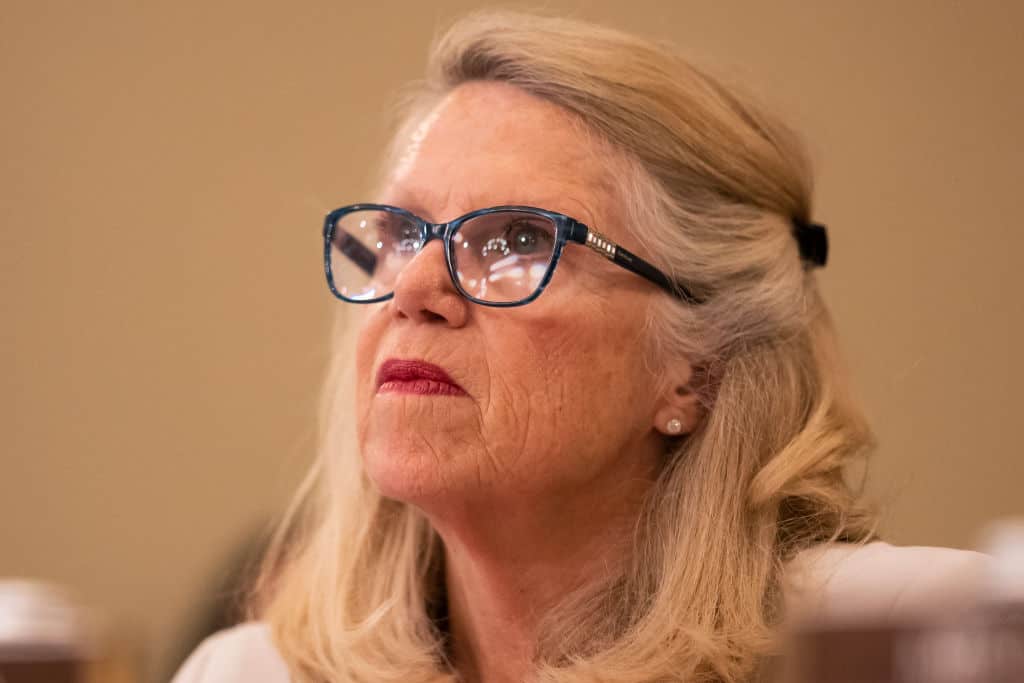
Unlike many other pro-growth tax reform provisions, the corporate tax rate isn’t set to expire at the end of 2025, but some policymakers and President Biden have proposed increasing it.
The NAM recently talked to Rep. Carol Miller (R-WV), the head of the House Ways and Means Committee’s Supply Chain Tax Team, about how raising the corporate tax rate would “devastate” manufacturers, and what she and her colleagues in Congress are doing to keep it where it is.
“Devastating for every American”: Raising the corporate tax rate from its current, competitive 21% rate would be ruinous, Rep. Miller said. She’s focused on preventing that from happening.
- “If the corporate rate goes up, it would be devastating for every American, from the small business owner to the CEO who is trying to expand their business,” Rep. Miller told us. “The corporate rate rising means there will be higher prices while the U.S. struggles to compete on the global scale. The best thing we can do in Congress is cement the corporate rate at 21%—or better yet, lower it even more—through the [2017 Tax Cuts and Jobs Act] reauthorization in 2025.”
- Prior to tax reform, the U.S. had the highest corporate tax rate in the Organisation for Economic Co-operation and Development at 35%, and the third-highest rate in the entire world, harming America’s ability to attract manufacturing investment.
The effect of 21%: Rep. Miller emphasized that the U.S. economy has “seen only positive impact from the corporate rate being lowered.”
- “When the pandemic hit and the markets were falling due to uncertainty and instability, the lower corporate rate gave companies more flexibility to help their employees and keep costs low instead of paying the government sky-high taxes,” she went on. “The lower corporate rate protected jobs, helped produce more economic growth and makes all the difference for American families who are struggling with inflation.”
- In 2018, the year the 21% rate took effect, manufacturers created more than 260,000 jobs and were able to raise wages by 3%, the fastest pace in 15 years.
What manufacturers can do: To help preserve the 21% corporate tax rate, manufacturers should be vocal about its importance to the U.S. economy.
- “Spread the word to those who might not know why the corporate rate is so important,” Rep. Miller concluded. “Some think that in order to bring down inflation, you need to raise taxes on businesses. That is not true. Prices only go down if costs for companies go down, and the corporate rate is an effective way to do that while simultaneously boosting the American economy.”
Get involved: The NAM’s “Manufacturing Wins” tax campaign gives manufacturers the opportunity to share their tax reform stories with policymakers. You can join the campaign at www.NAM.org/MfgWins.
Learn more: Our full interview with Rep. Miller is available here.
